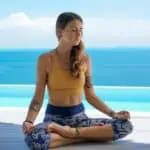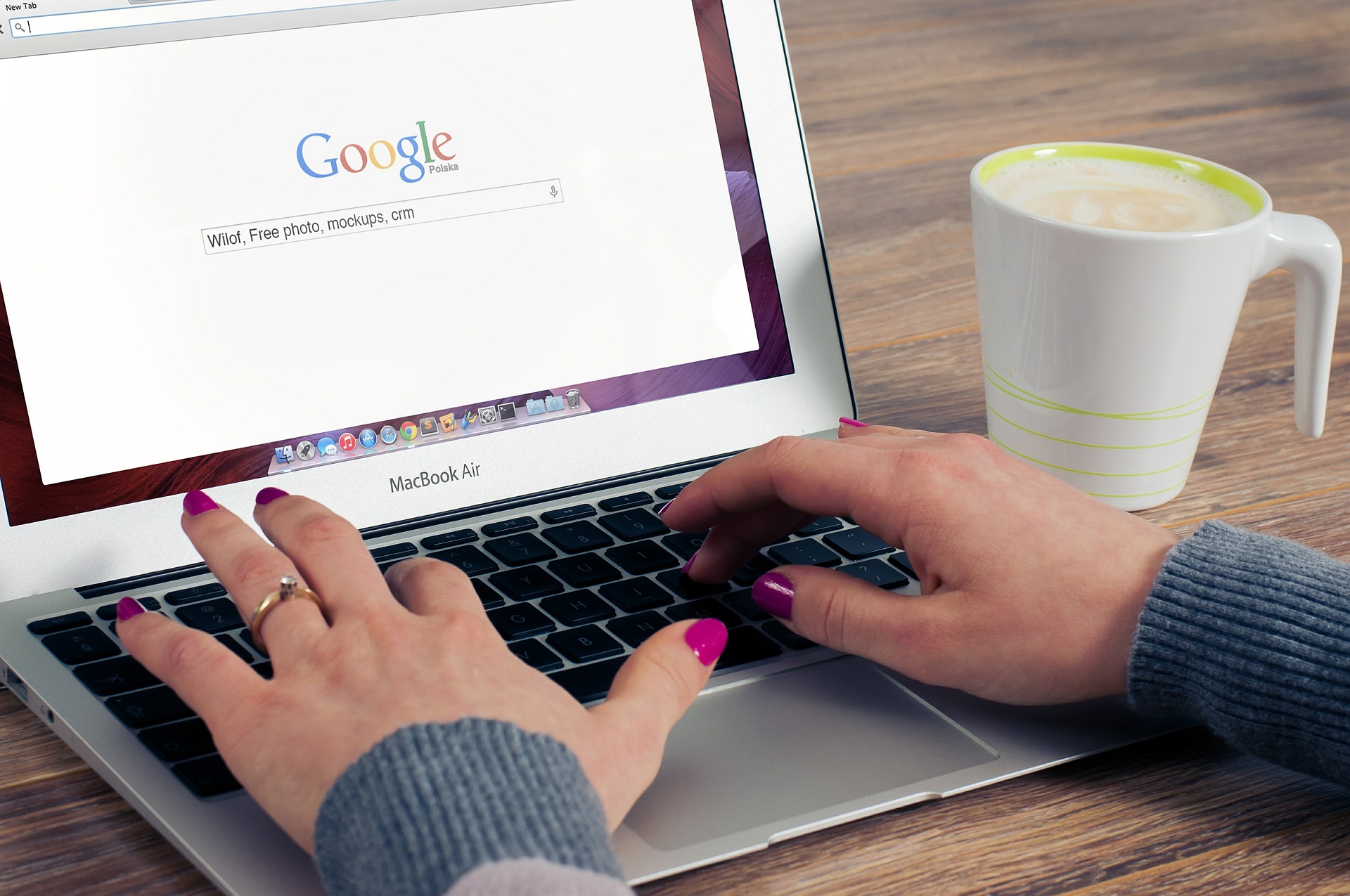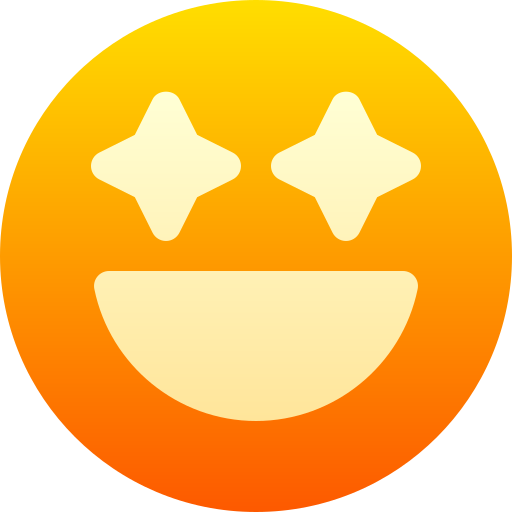Listen to this article:
Key Takeaway
Yoga backbends counteract daily forward-bending habits, lengthen front body muscles, and open the heart chakra, with poses like Cobra and Full Wheel offering progressive challenges and benefits for spine health and chakra alignment.
Yoga backbend poses are very common poses that are included in a yoga class. But the depth and level of backbends can vary greatly.
If you are looking to get yourself into full wheel (chakrasana) or any of the variations of this beautiful heart-opening pose, then we have all the information that you need.
Contents
- 1 What is a backbend in yoga?
- 2 What are the benefits of yoga backbend poses?
- 3 Key yoga poses and areas to warm up before doing a backbend.
- 4 How to enter Chakrasana (Full Wheel Pose) Safely
- 5 Completing your practice with yoga backbends
- 6 The Importance of Breathing in Enhancing Yoga Backbends
- 7 Safety Measures for Engaging in Yoga Backbends
- 8 Frequently Asked Questions:
What is a backbend in yoga?
A backbend is a pose in which the spine is arched or curved strongly. It involves pushing the hips forward and allowing the head to fall backward.
There are lots of different backbends that can be done standing, in a seated pose or even lying on the ground. Let’s explore how these poses can gradually increase in difficulty to become deeper backbends that are more challenging for your personal practice!
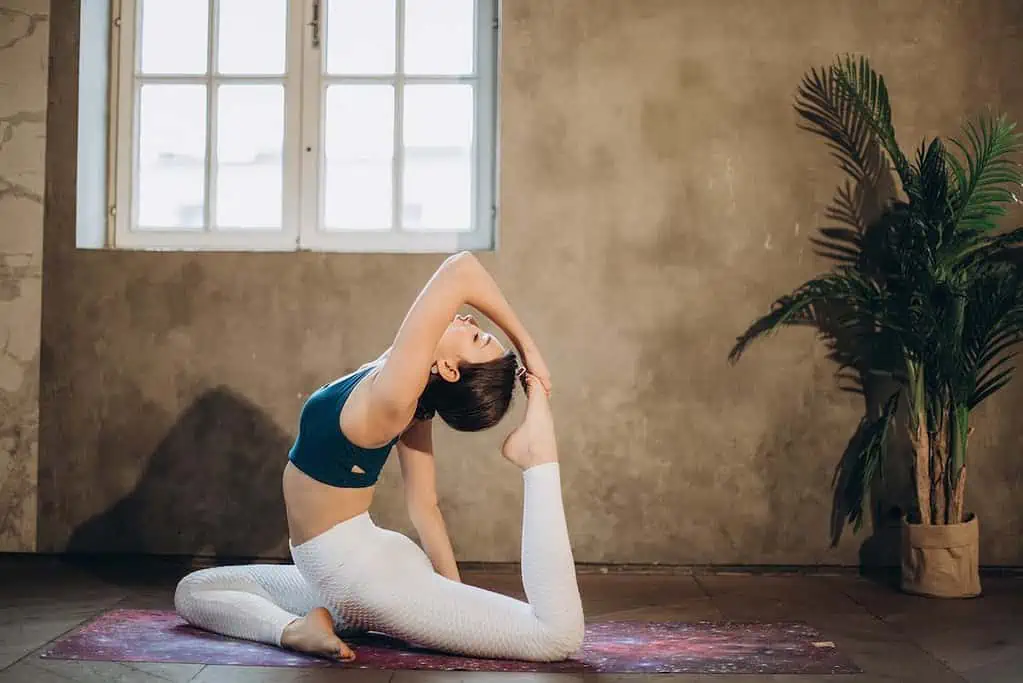
What are the benefits of yoga backbend poses?
Most of the day, we find ourselves bending forward, hunching at the desk, to pick something up off the floor or touch our toes. This creates a pattern of forward folding in the body, which can shorten some of the muscles on the front side of the body. To counteract this regular forward movement, yoga backbends can be your remedy.
Backbends will help to lengthen the muscles along the front of the body and relieve tension in some of these areas that are overused.
On an energetical level, when you open the front side of the body, your heart chakra naturally opens too, because you are putting down your protective ‘hunched’ shield around the heart space and instead opening up to let love flow.
On a physical level, backbends strengthen the muscles of the spine, and this strength can reduce the risk of spinal or back injuries in the future.
Are you ready to absorb some of these benefits?
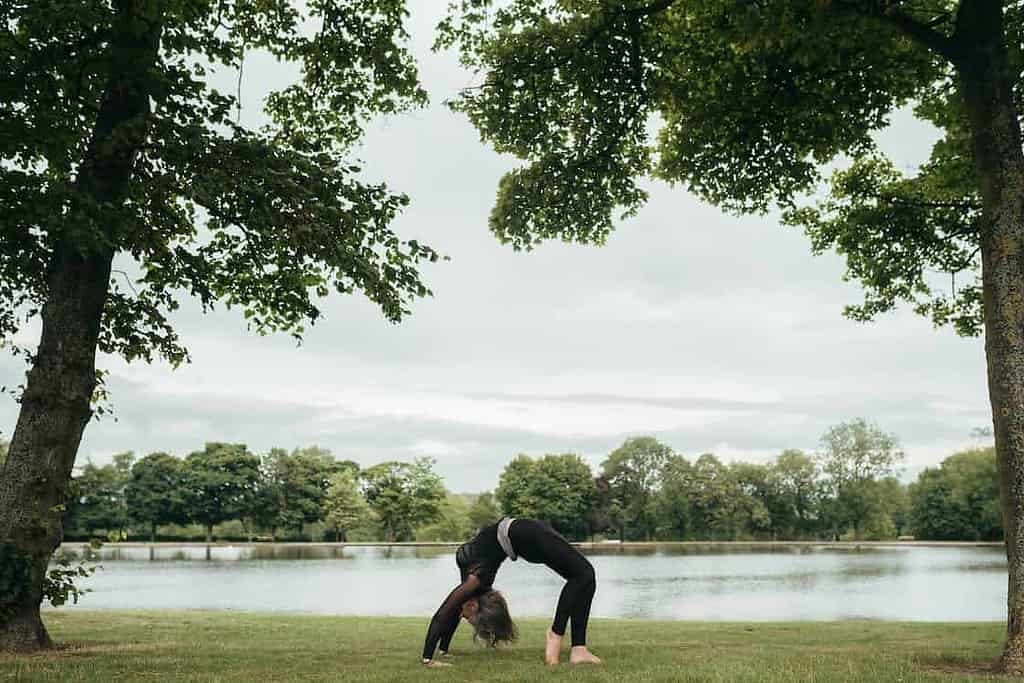
Key yoga poses and areas to warm up before doing a backbend.
It is important to start with a gentle backbend and slowly progress into deeper variations. This will prevent injury and also allow you to get to know your body better.
To get to know your limits, pay attention to your breath. If you are within your body’s limits, you will be easily able to stay for a few moments and take a few breaths. If at any point you find that you have stopped the flow of your breath, it means it is time to slowly walk your way out of the pose you are in.
When the breath stops, it is the number one indicator that you’ve pushed your body too far. Listen to this signal so that you don’t have to experience injuries.
Another way to prevent injuries is to warm up with simple backbends before you try a stronger backbend. Here are a few great poses to warm up with:
Stretching the Shoulder Blades
A beautiful way to start is in a standing position with your feet hip-distance apart. Reach your fingers toward the sky and grow your spine long. Take a slight bend in your knees as you look up toward the sky, gently tilting your chin to look upward. This will start to create a curve through the upper body.
If you want to take it deeper, place your hands on your lower back with your palms flat and your fingers facing downwards. Support your lower back, push your hips forward slightly, and maybe let your head fall back to look at the wall or space behind you.
Take a few deep breaths here, enjoying the stretch through the front of the shoulders, the shoulder blades, the heart space, and the entire spine.
It is important to start with smaller backbends to get the blood circulation flowing and to warm up your spine properly before attempting any deeper backbends.

Cobra Pose (Bhujangasana) and Upward Facing Dog (Urdhva Mukha Svanasana)
For Cobra Pose, you will start laying face down on the ground. Feel your forehead connected with the earth, as well as your hip flexors and big toes pressing into the ground beneath you too.
With your elbows bent, bring your hands beneath your shoulders and start to activate your back body by squeezing your shoulder blades together. With this, you should feel a slight uplifting sensation throughout your chest and front body.
Press into the palms of your hands and slowly raise your head, shoulders, and chest off the ground. You want to have the sensation of pulling your chest forward while starting to open through the upper spine. This is Cobra Pose.
If you want to take this deeper, push it into your hands and begin to straighten your arms. As you raise your chest higher, you will also begin to feel this stretch in your lumbar spine.
You may even start to lift your pelvis off the floor, and progress to tucking the tops of your feet toward the earth and lifting your knees off the floor too. This is Upward Facing Dog Pose.
In these poses, you will feel the expansion across the rib cage and chest and an opening through your shoulders and upper body. Breathe deeply and enjoy it.
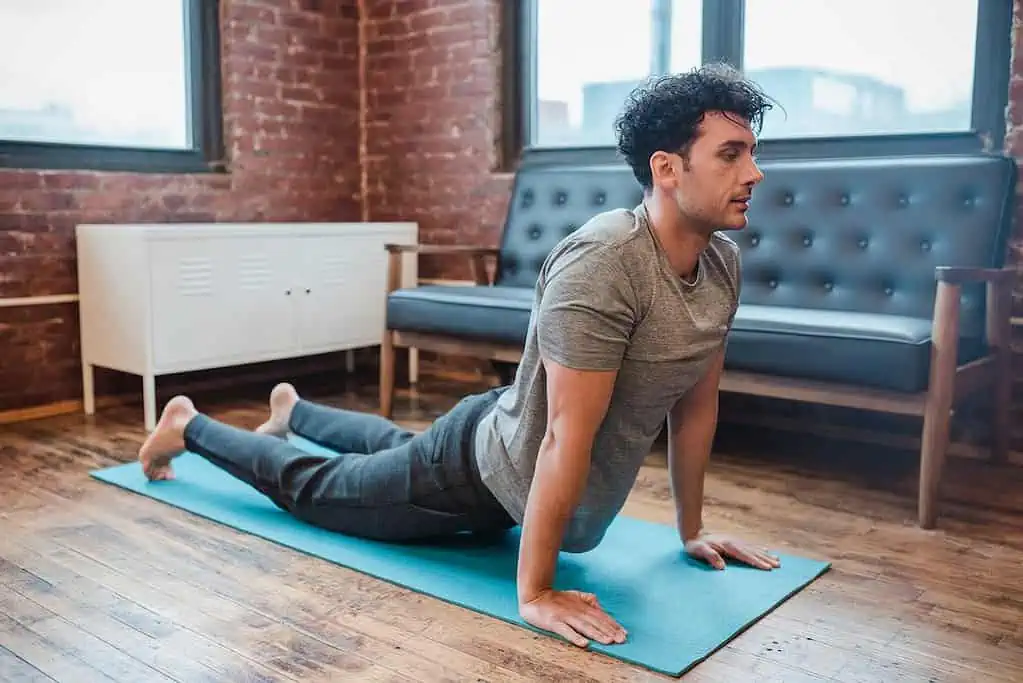
Fish Pose (Matsyasana)
The starting position for this pose is laying flat on your back, as in savasana. Slightly lift your hips off the floor and slide your hands under your buttocks with the palms facing down to the ground. Set the hips back down on top of your hands. Relax the back of your head on the floor beneath you.
When you are ready to enter the backbend, bring your big toes to touch one another and choose to either point or flex your feet, becoming active in the leg muscles. Keep your legs straight as you prepare to come into this back bend.
Then, begin to bend your elbows, and with this bend, lift your head and chest off the floor. Slowly lower your head behind you, connecting the crown of your head with the floor. You will feel the support of your arms here as your rib cage and upper back open strongly.
Breathe for a few rounds, and when you are comfortable, slowly lower your body back down to the floor. Release your hands from underneath you and take a few moments in savasana to reset the body.
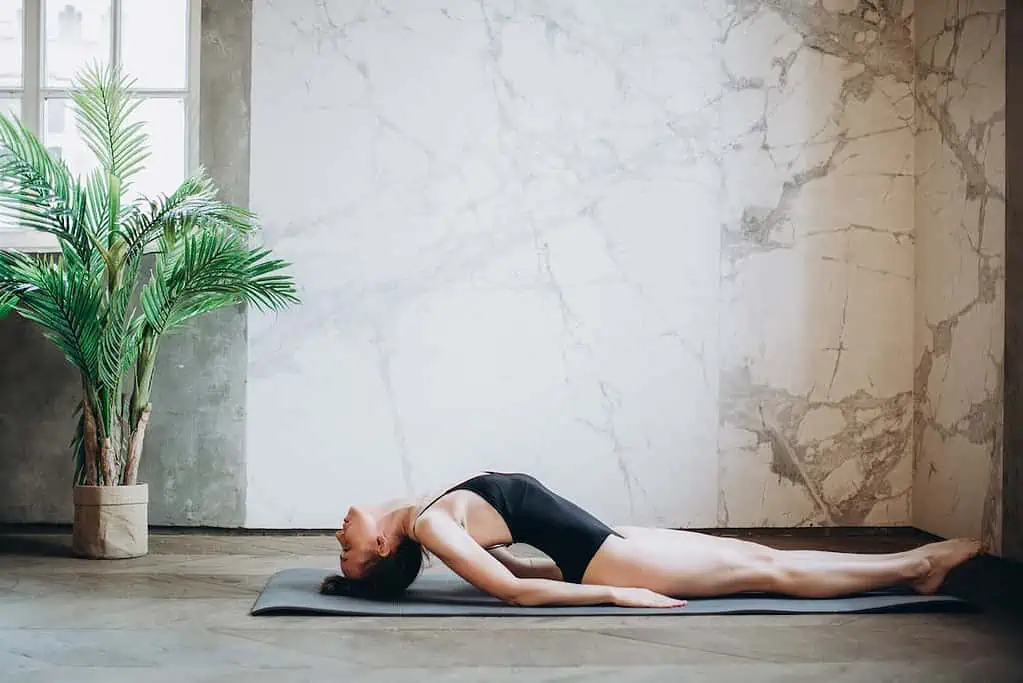
Camel Pose (Ustrasana)
Moving into camel pose now, this strong backbend pose can put a bit more pressure on the lower back and inner thighs. Start sitting on your knees, with your buttocks connected to your ankles.
Keep your feet hip-width apart, and make sure your legs and knees are also parallel to one another. Rise now, pushing your pelvis forward as you float your hips high. Straighten the spine put your hands on your lower back, and ensure your fingers point down to the ground.
Using your hands to support your lower back, push the hip flexors forward and activate your leg muscles, particularly the quadriceps and inner thighs, to allow yourself to go deeper into this strong backend.
If you feel safe here, you can drop your neck back and look behind you while ensuring that your chest is pushing forward. Keep supporting your body with your arms on your lower back.
If you want to deepen this backbend, you can try to release your hands to your feet. To do this, start on one side, for example, the left side. Reach your left hand down toward your left foot, ankle, or somewhere on the left leg.
If you can reach it, you may like to take your right hand up to the sky to expand and find length in the front of your body. If you are doing one leg at a time, ensure that your right leg, hip, and right knee are all still facing forward to prevent twisting in the spine here. Stretch this out on both sides. This is a half-camel pose.
Another option is to lower both of your arms down to your legs and come into a full camel pose. To do this, keep reaching your upper arms down toward your feet until your right hand connects with your right heel and your left hand with your left heel.
With this double connection, keep your arms straight, staying strong through the upper arms, and keep pushing your chest and shoulders forward to feel the full strength of this backbend.
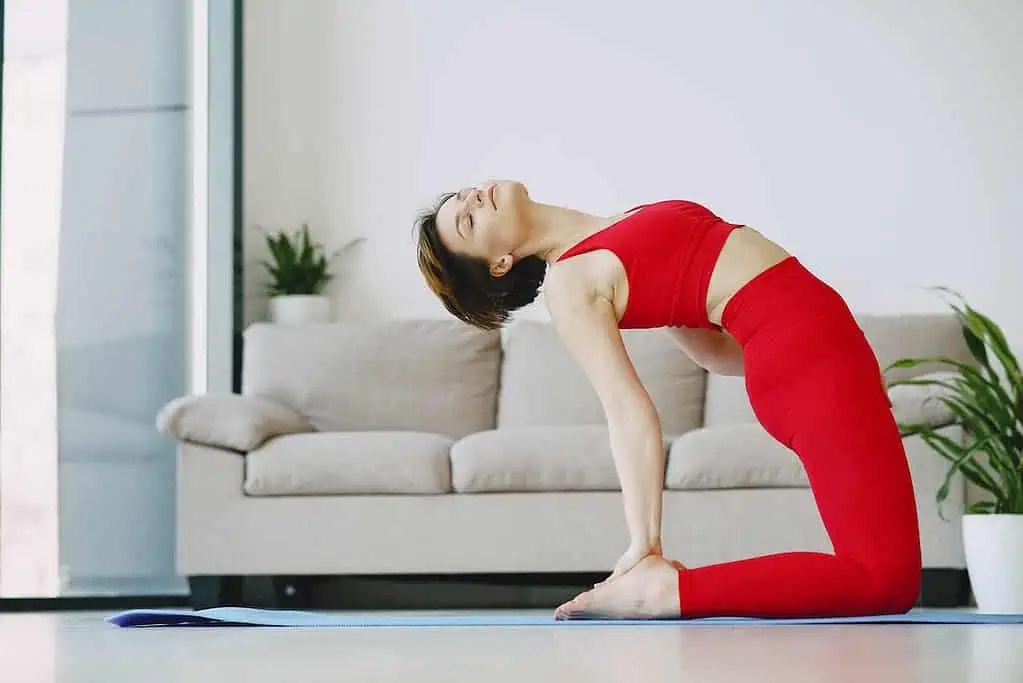
Note: Camel pose is similar to bow pose (dhanurasana), in which you lay on your belly and take your arms behind you to grab hold of your ankles this way.
You may like to attempt a bow pose instead of a camel pose if you don’t like the sensation of falling backward or if you are prone to dizziness with your head dropped backward.

How to enter Chakrasana (Full Wheel Pose) Safely
Now, this is the moment you have been waiting for: The King of the Backbends. If it is your very first time attempting a full-wheel pose, you may want to ask a yoga teacher or gymnastics coach for support, as it is one of the strongest yoga poses. If you think you’ve got the strength it takes to attempt it yourself, then here are a few alignment tips:
Start lying on your back on your yoga mat, and bend your knees, bringing your legs and ankles in toward your hips. Ensure your feet are hip-width apart and your legs are feeling strong.
Take your wrists directly next to your ears, as this will ensure that they are shoulder-width apart. Have your palms facing the ground and your fingers facing forward to your shoulders.
When you feel ready, begin to press into your arms and legs, lifting your chest off the floor. Push your hip flexors up toward the sky, finding the beautiful bend in your body.
Find strength in the arms and legs to push a little deeper, and then, when your head is clear off the floor, allow your neck to soften to drop the head and neck backward to hand in between your arms.
If you feel any pain in the neck or back, slowly lower your body back down immediately. Otherwise, if you are enjoying all the benefits that this pose can bring, keep your chest open and take a few deep breaths here in Full Wheel Pose.
Level up: Working on getting the legs and arms straight
When you are comfortable with the general shape of backbends and you feel strong in Full Wheel Pose, take your pose to the next level by working to straighten the legs and the arms.
This will create a deeper stretch through the shoulders and chest, as well as deepen the bend of your body. Use the strength in your legs to really open and awaken the body here and to let the energy flow through your spine as you enjoy the backbend.
Why is Full Wheel Pose called Chakrasana?
When you are in full wheel, your entire front body is open. Your shoulders and chest are creating space for the heart to open, your hips are expanding to create space for your sacral chakra to open, and even your throat and neck are relatively open with your head back, making space for the throat chakra.

This openness allows all seven chakras to be open, and your entire body to feel alive, from your big toe up to the crown of your head. Most backbends do allow chakra openings because the chest is fully exposed, but Full Wheel is one of the few backbends that activates the entire chakra system.
Completing your practice with yoga backbends
If you do want to include backbends in your yoga practice, it is important to finish the practice with them. This will ensure that your shoulders and chest are open and the blood circulation has warmed the body before attempting these deep backbends.
Yoga classes that work up to a “key pose” will give you all the strength and conditioning needed to safely work toward deepening your backbends. Ensure you start slowly and enjoy some foundational beginner yoga poses before diving straight into backbends.
The Importance of Breathing in Enhancing Yoga Backbends
Breathing plays a role in the practice of yoga. Let me explain how paying attention to your breath can elevate your backbend routine.
The Impact of Ujjayi Breathing
In my experience, incorporating Ujjayi breathing has been a game-changer. This specific breathing technique generates warmth in the body, preparing it for backbends. By utilizing Ujjayi breath, you can safely maneuver into postures like Full Wheel Pose.
Breath Work for Backbends
Initiate your practice with deep breaths to soothe the mind and prepare the body. When transitioning into a backbend, concentrate on lengthening your inhales to expand the body further. During exhales, gently sink deeper into the posture. This method has enabled me to find comfort in demanding poses.
Remember that if you encounter breathing difficulties, it’s a signal to dial back your efforts. Always tune in to your body’s cues. This advice has prevented me from overexerting myself. Can serve as a reminder for you too.
Integrating breathing techniques into backbends has been truly transformative. It’s not about enhancing flexibility; it’s also about establishing a connection with your body. Give it a shot—you may be pleasantly surprised by the outcomes.
Safety Measures for Engaging in Yoga Backbends
When delving into the realm of yoga backbends, it’s important to address safety. Firstly, if you experience pain in your back, neck, or shoulders, it’s essential to proceed with caution. Yoga emphasizes tuning into your body; if a posture causes discomfort, that serves as a signal to halt.
For individuals with a history of issues or ailments such as slipped discs, seeking advice from a healthcare professional before trying backbends is wise. It’s better to err on the side of caution. Additionally, refraining from backbends during pregnancy is advisable unless guided by an expert in yoga.
Keep in mind that yoga isn’t about competing with others; begin with backbends and slowly progress as your flexibility and strength increase. Always engage in a warm-up to prepare your body and minimize injury risks.
Lastly, heed the signals your body sends you. Feeling some discomfort is normal; however, experiencing pain is not. If a posture is causing pain, gracefully exit it. Remember that yoga is a journey rather than a sprint; take your time and savor the experience.
Pop quiz! 🧘🤔
Backbends can only be performed by advanced yoga practitioners.
Cobra Pose is a good starting point for beginners interested in backbends.
Full Wheel Pose should be attempted without any prior warm-up.
Frequently Asked Questions:
Are backbends good for your back?
Backbends are great for the back. Especially if you find that most of the day, you are hunched at a desk or sitting with poor posture.
In this case, backbends will counteract these movements and lengthen the muscles on the front side of your chest and body. Over time, backbends will strengthen the muscles of the spine and reduce the risk of back injuries.
Can everyone attempt to do backbends?
Yes. There are varying difficulties of backbends, so if you are new to yoga, it is recommended that you start with a more gentle backbend, and over time and with practice, you may progress to the deeper backbend variations.
Taking it slowly will ensure that you increase your strength and can pull off backbends safely!
I am new to yoga – What is the best backbend to start with?
Start easy with a baby cobra and progress to an upward-facing dog. These poses (as described in detail in this article) will slowly start to lengthen the muscles on the front side of your body.
Then, as these muscles get longer and stronger, you can progress to Fish Pose, Camel Pose, and eventually Full Wheel Pose. Having a yoga goal in mind will help to keep you motivated throughout your practice and will encourage you to keep showing up on your mat.

